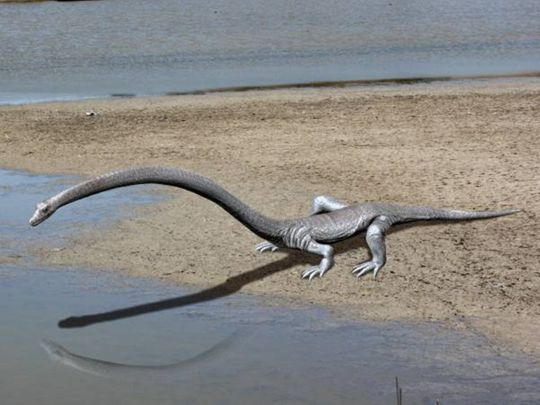
On the border of Switzerland and Italy sits the Monte San Giorgio fossil site. There, archaeologists have uncovered a massive record of marine life from the Middle Triassic era – and one shocking discovery.
Click start to play today’s Spell It, where we learn more about the prehistoric animals that have roamed the Earth since the ‘dawn’ of time.
Researchers from Switzerland and Germany, who published their findings in a study on June 19, in the journal Current Biology, were examining a giant predator that lived approximately 240 million years ago – a marine reptile from the species Tanystropheus hydroides. The massive predator could grow to six metres long, and feasted on fish and squid in a lagoon during the Middle Triassic period.
Like other Tanystropheus, this particular one had an extremely long neck. The animals were known to have necks three times longer than their torsos, in some cases. But unlike its counterparts, this one had been decapitated.
What paleontologists found was incredible – they spotted bite marks and bone breaks on some of the vertebrates, indicating that the creature had been attacked by another predator that knew to target their long necks, which were the weakest points of their body. The study even went on to state that the larger predator would have made its attack from above, swooping down and biting the neck of the Tanystropheus.
The question is – what enormous creature could have killed a 20-foot-long ambush predator with a single bite?
The list of potential killers is substantial, according to researchers. But by measuring the distance between tooth punctures and comparing the bite size to large predators that lived at the time, they narrowed the list down to these final suspects:
- Cymbospondylus buchseri: This large ichthyosaur could grow up to 5.5 metres.
- Nothosaurus giganteus: A colossal reptile, it could grow up to seven metres.
- Helveticosaurus zollingeri: This 3.6m-long predator had a flexible tail and powerful forelimbs.
Regardless of what massive creature chomped off the head of the Tanystropheus, one thing is clear – we’re just glad it doesn’t exist today.
What do you think of this latest study about the prehistoric world? Play today’s Spell It and let us know at games@gulfnews.com.






